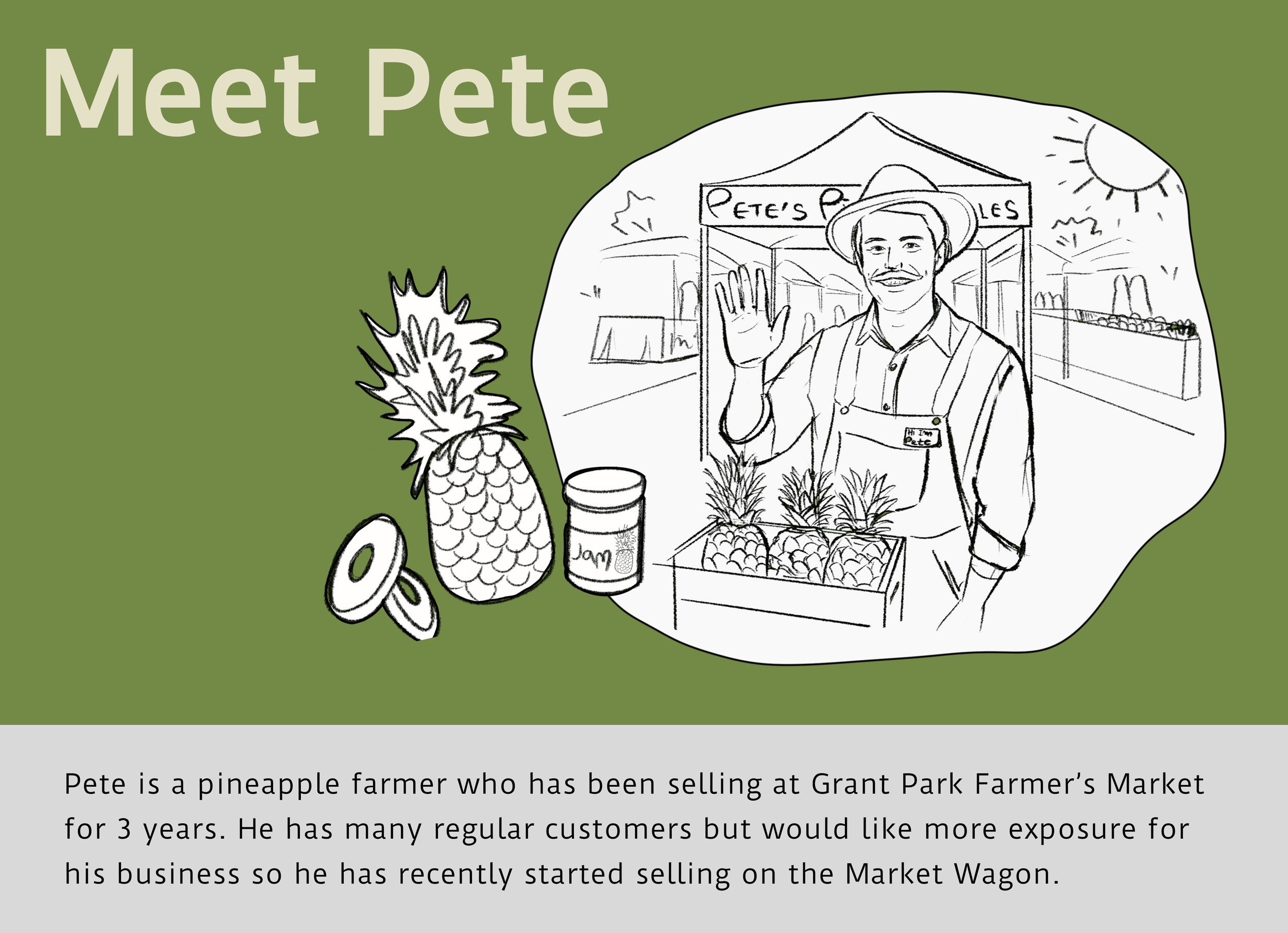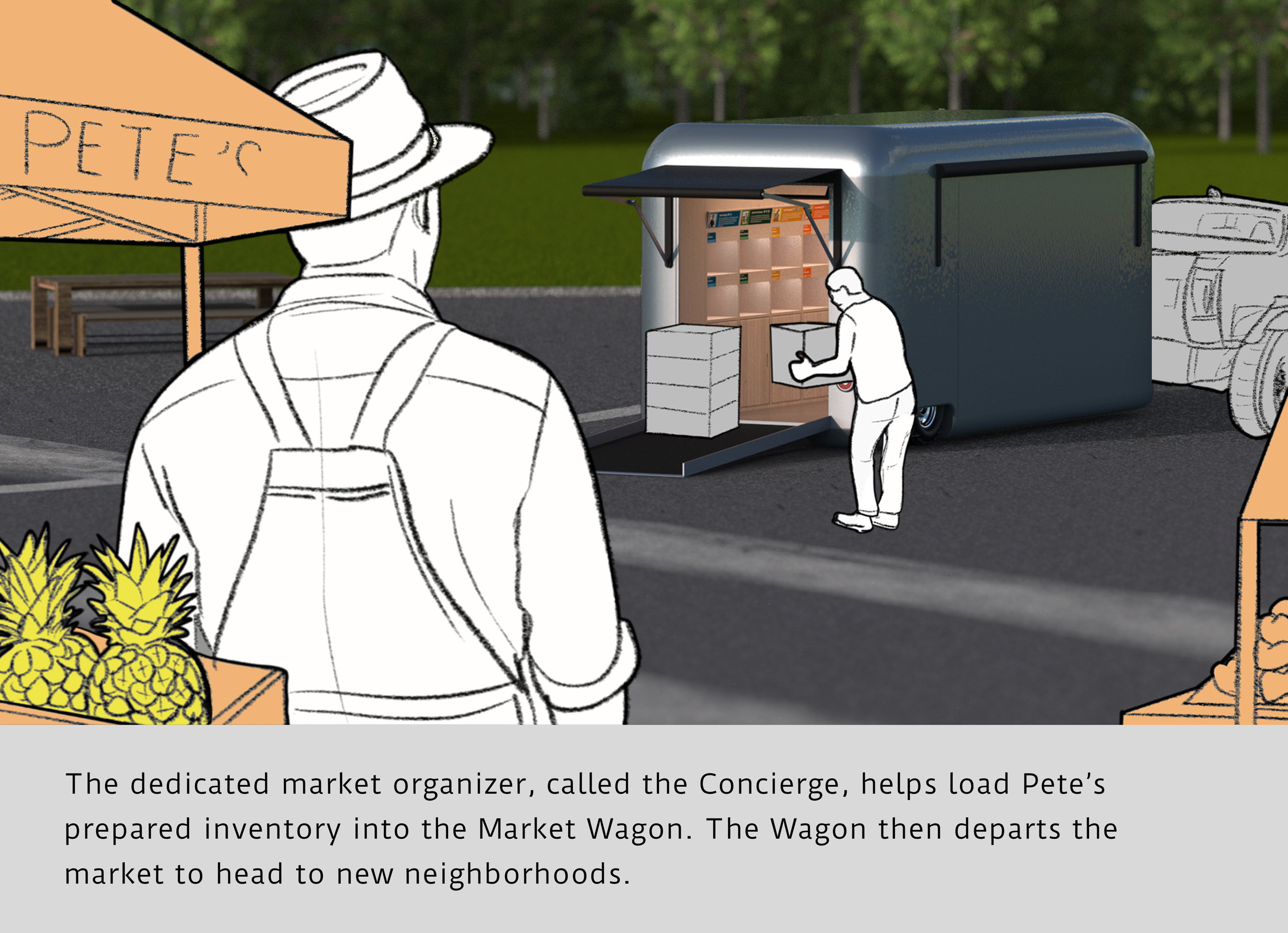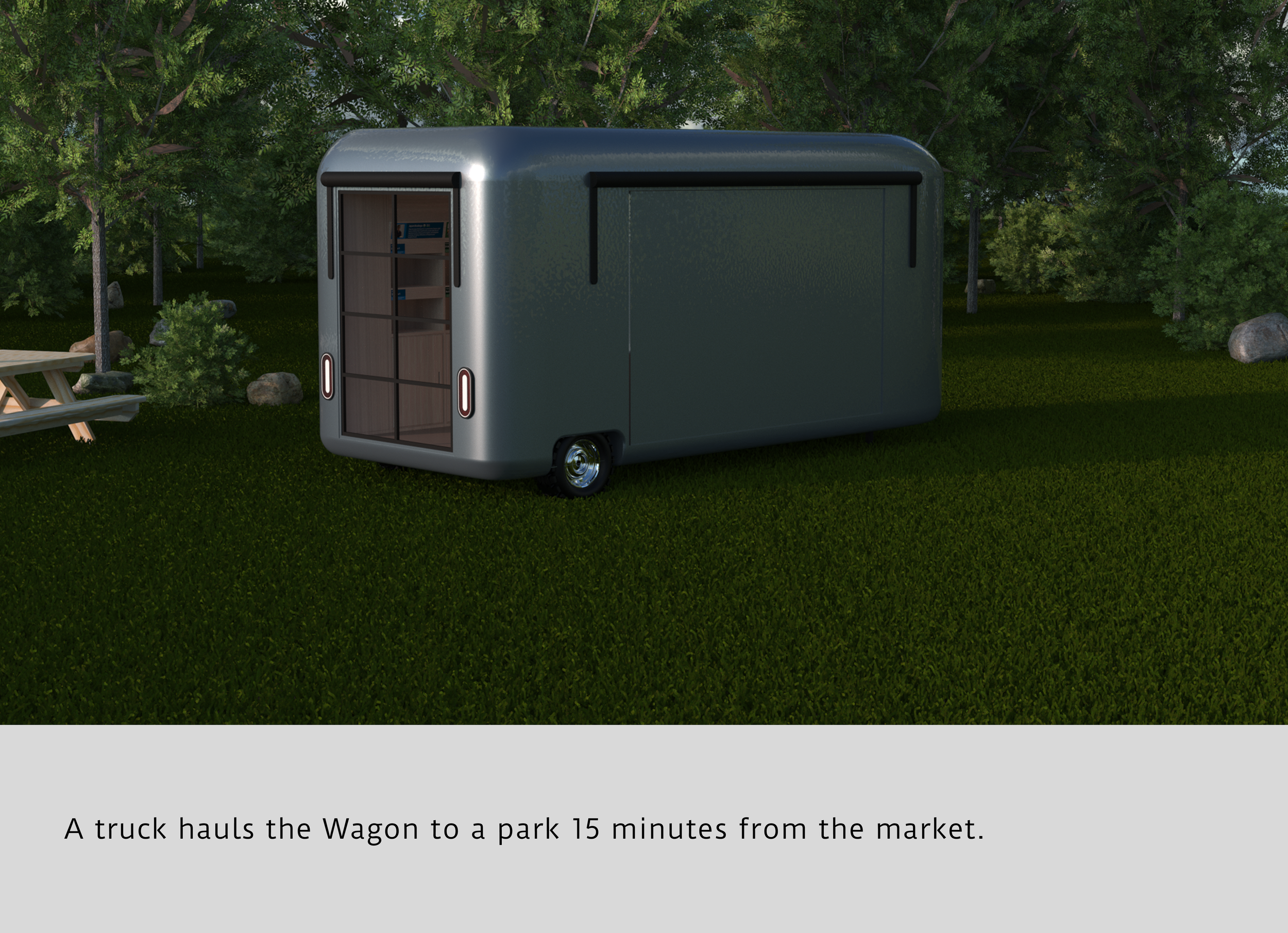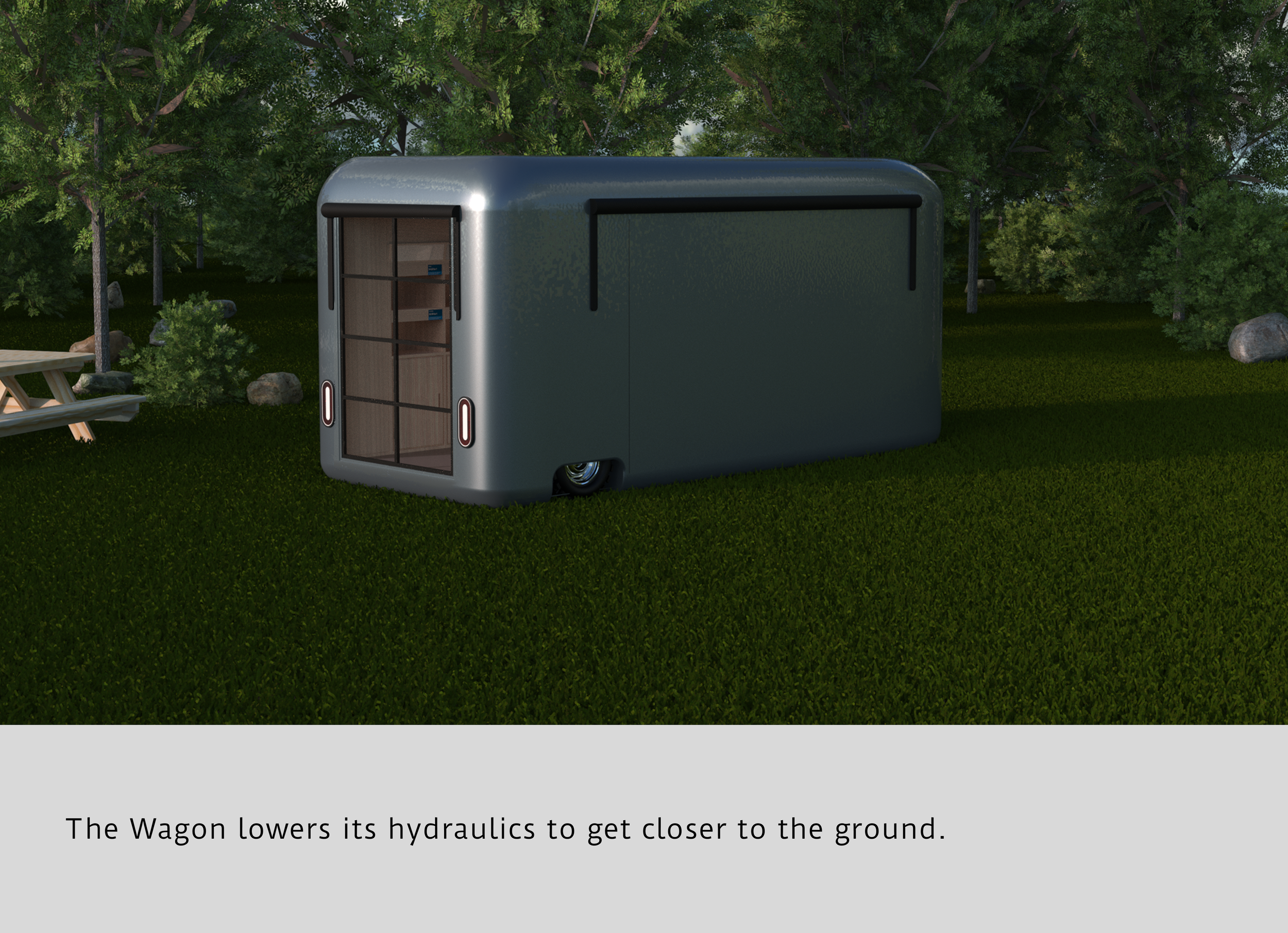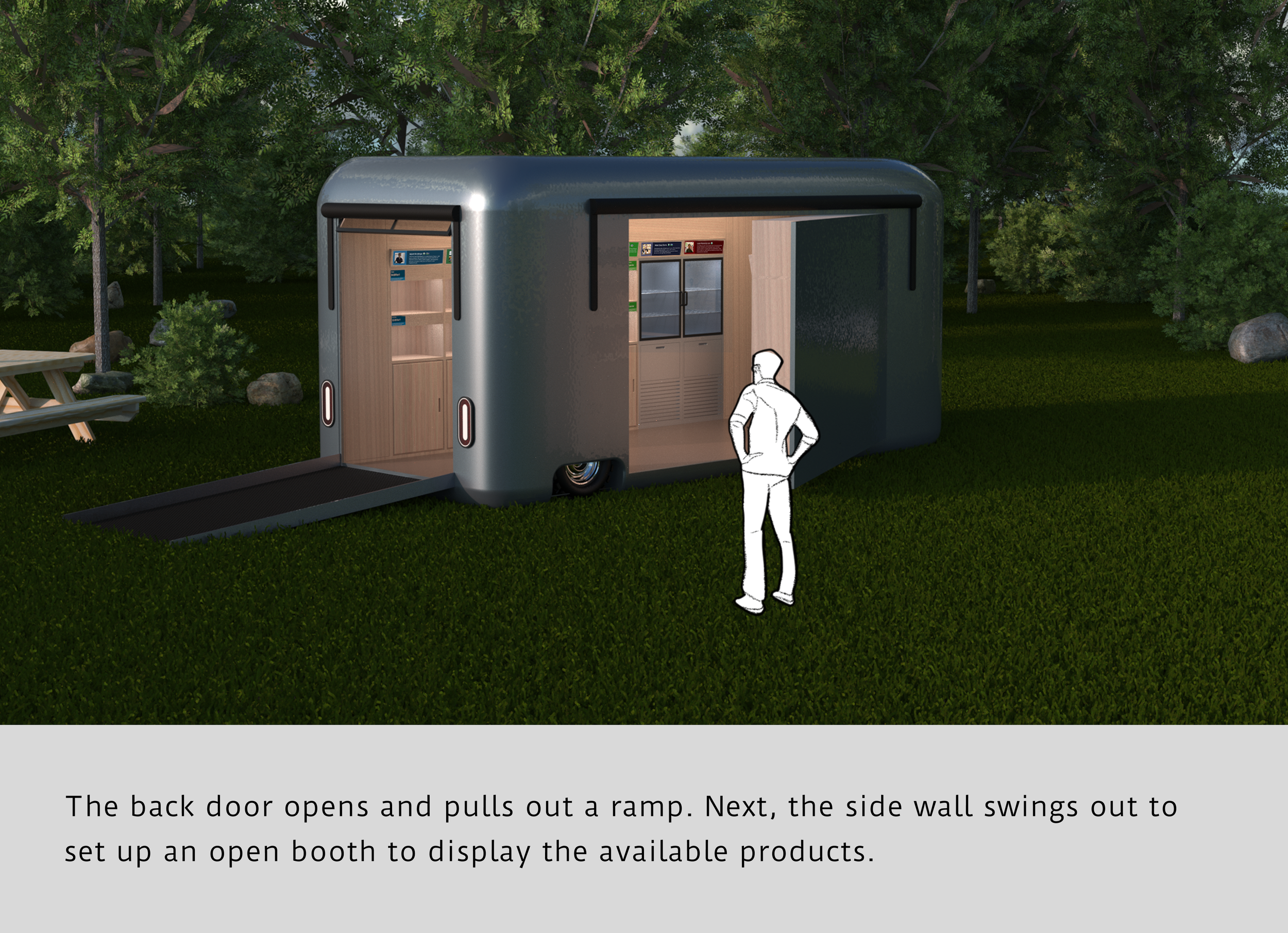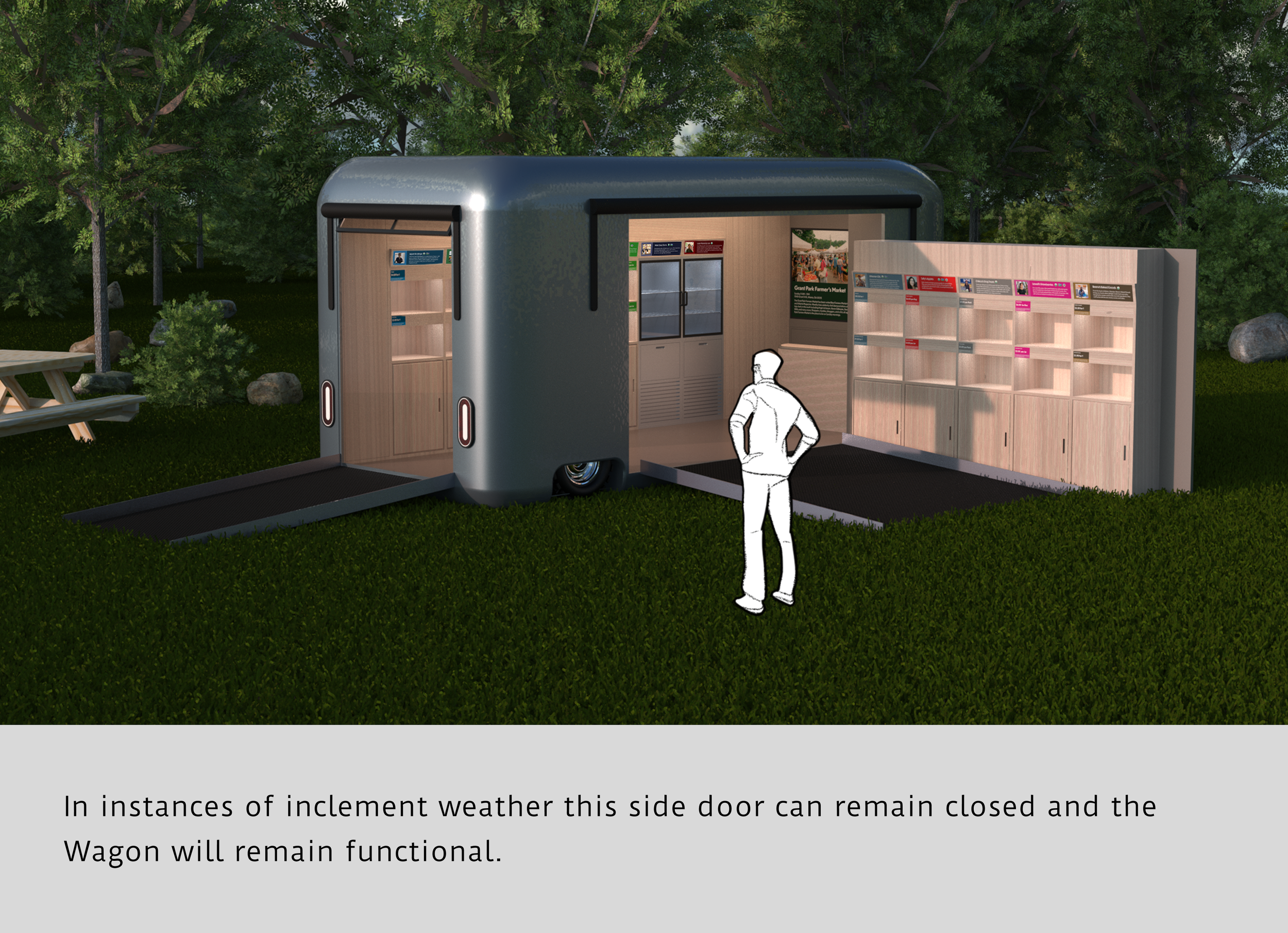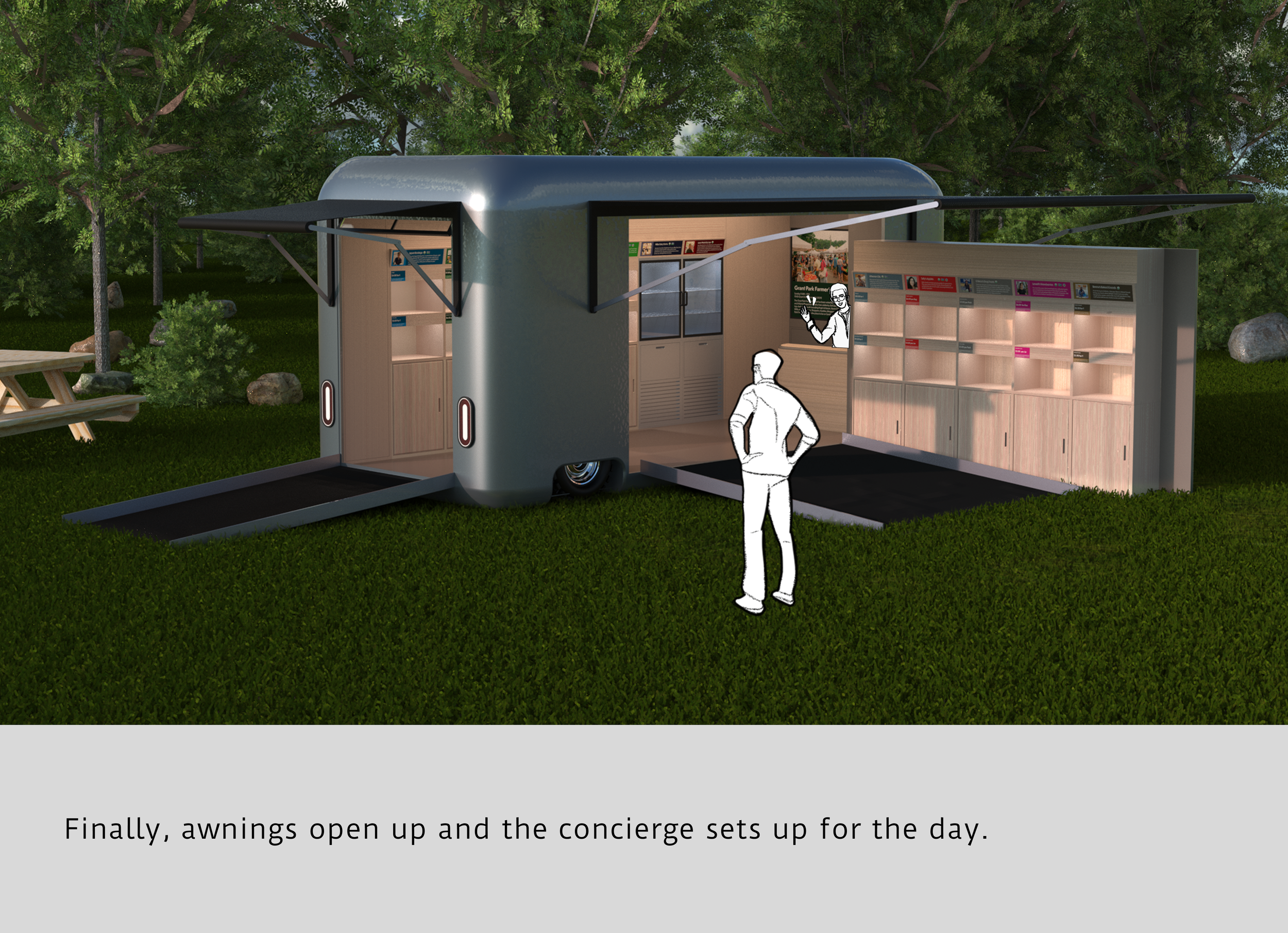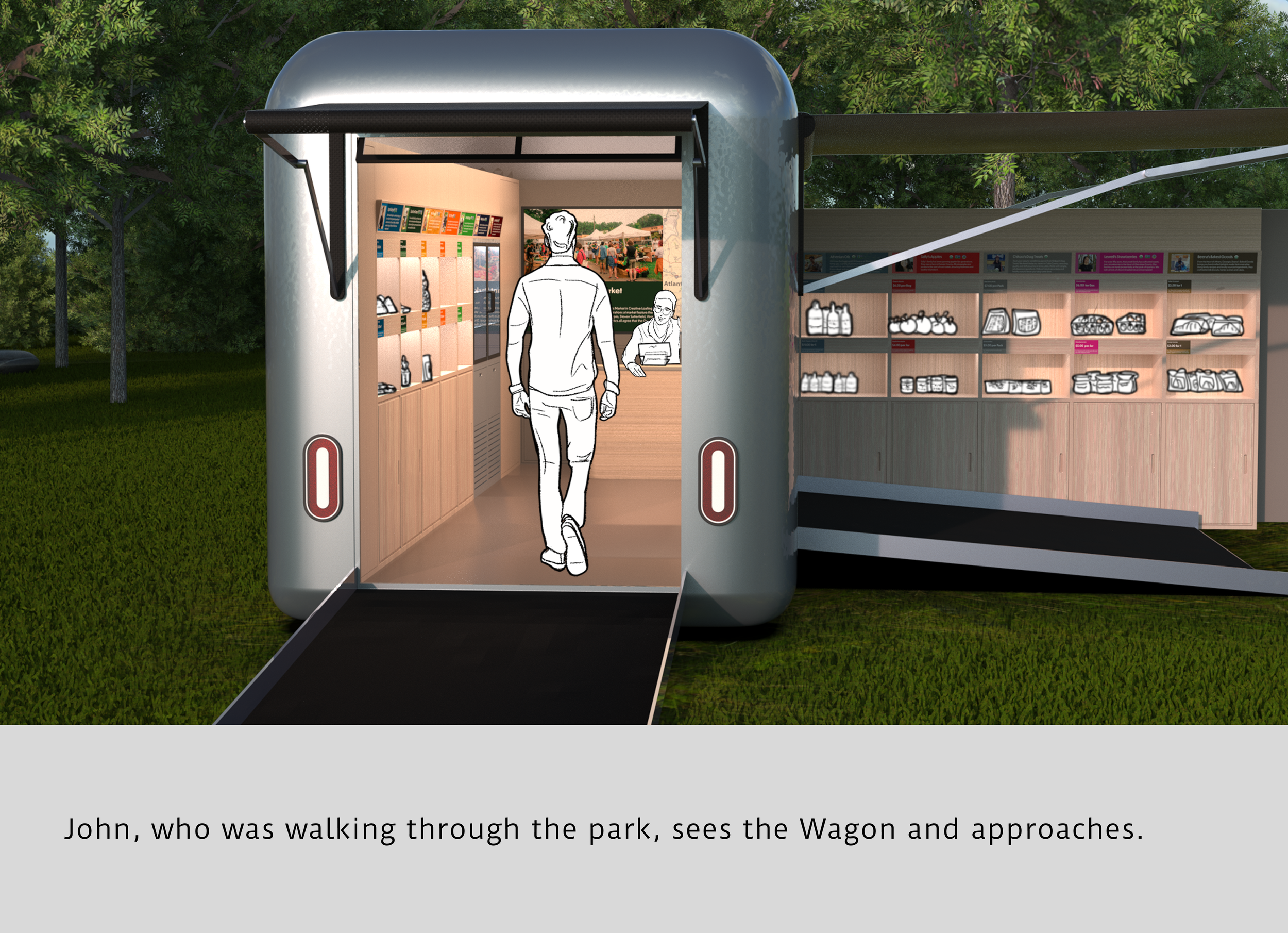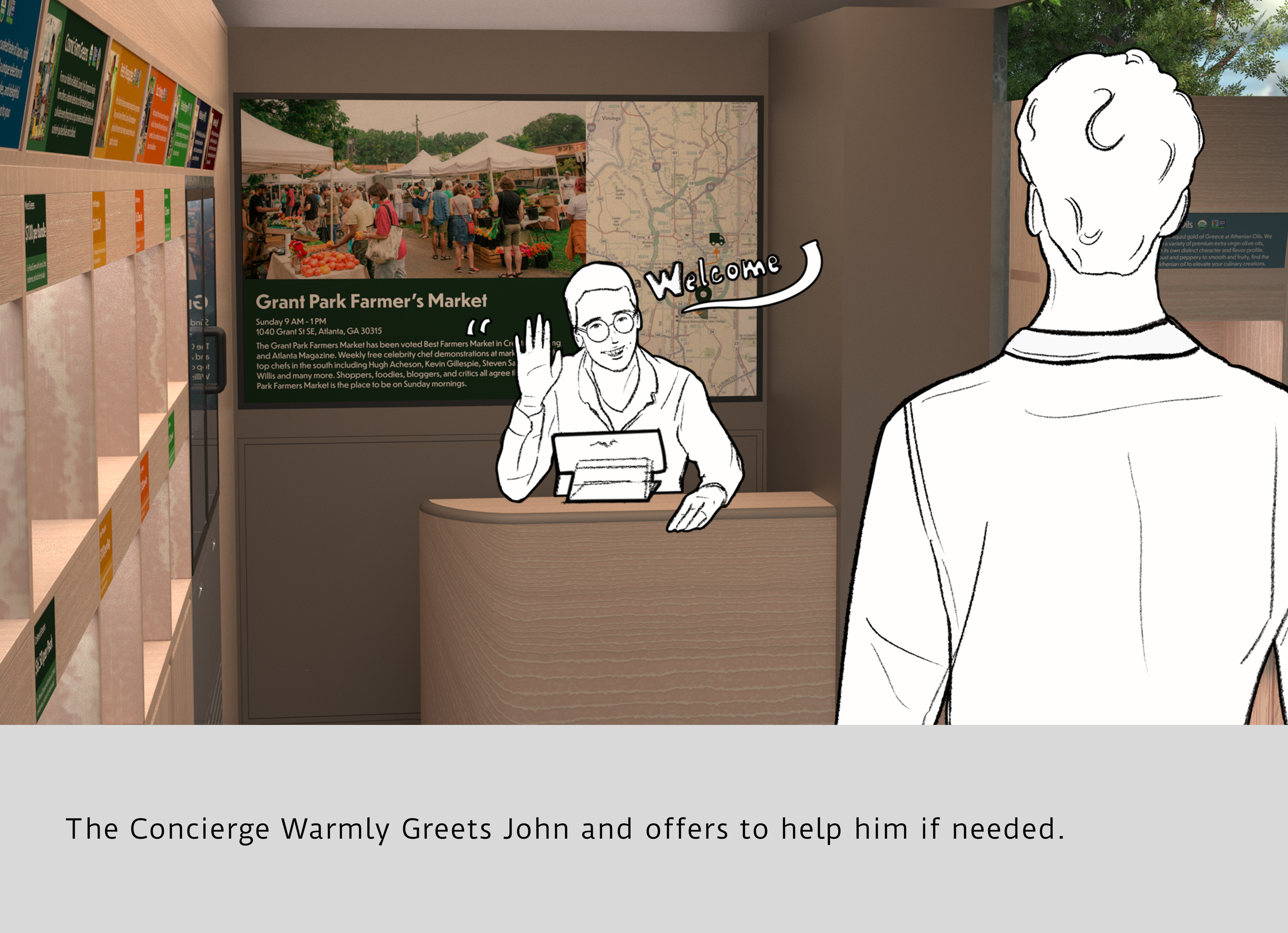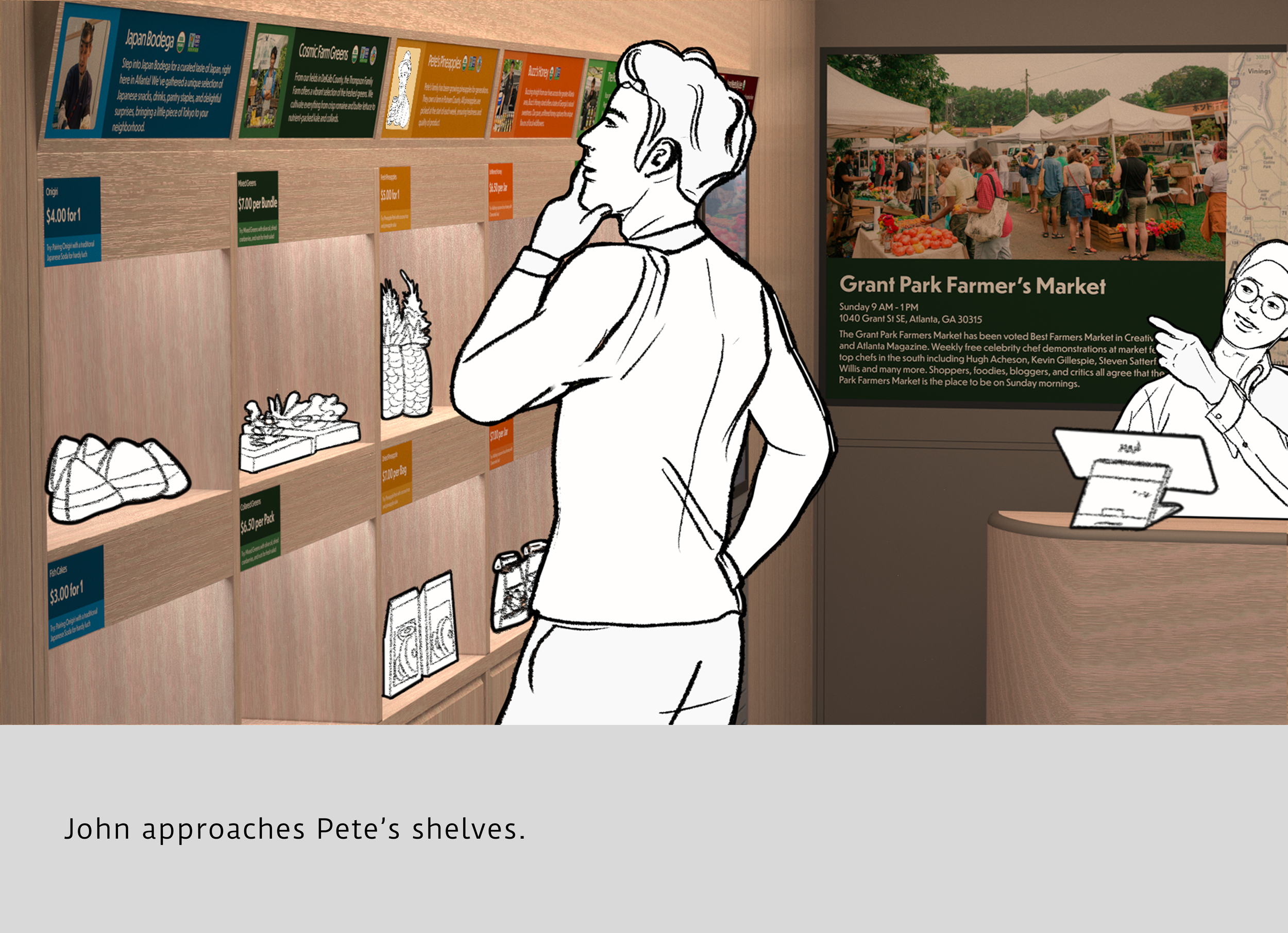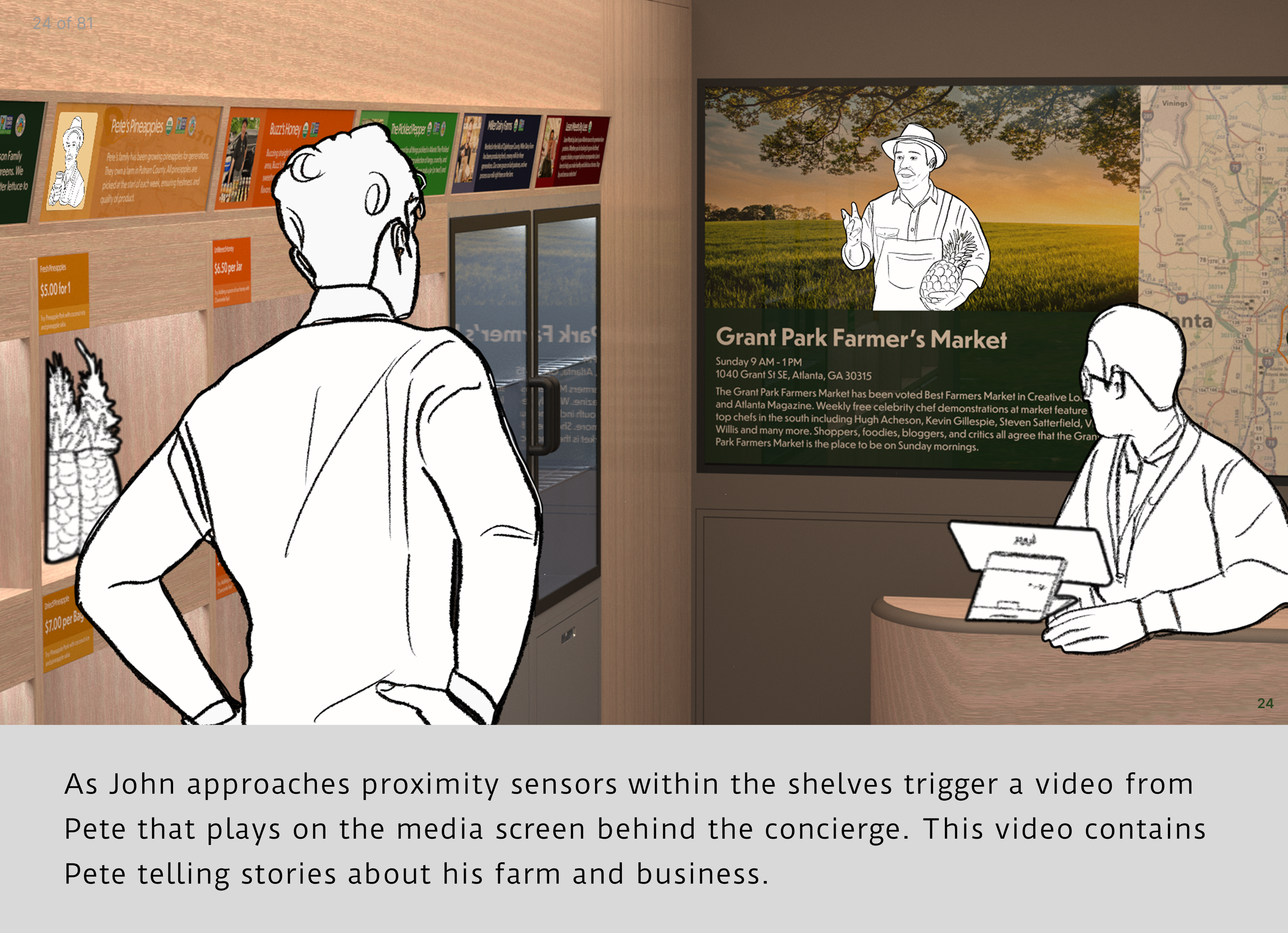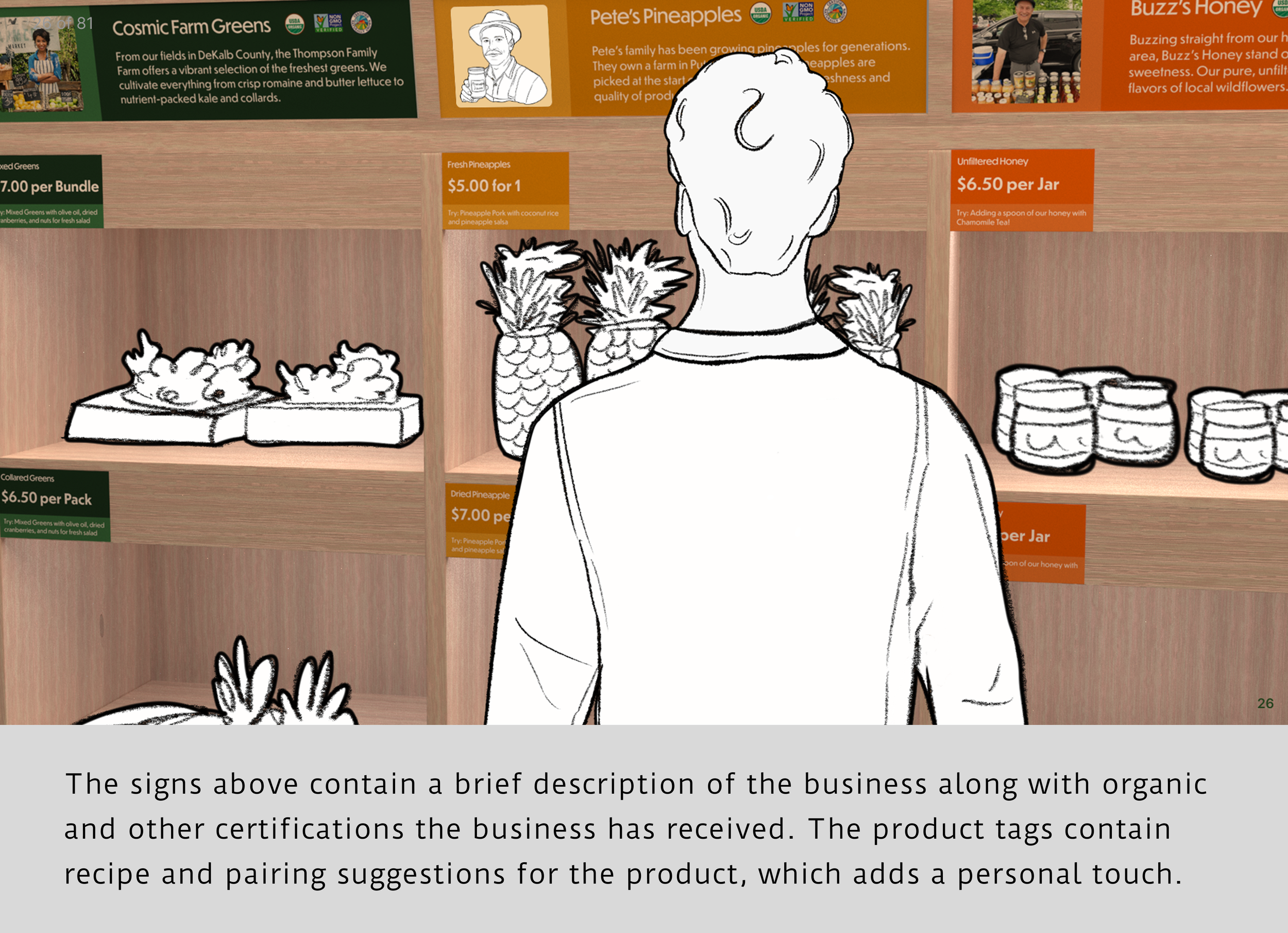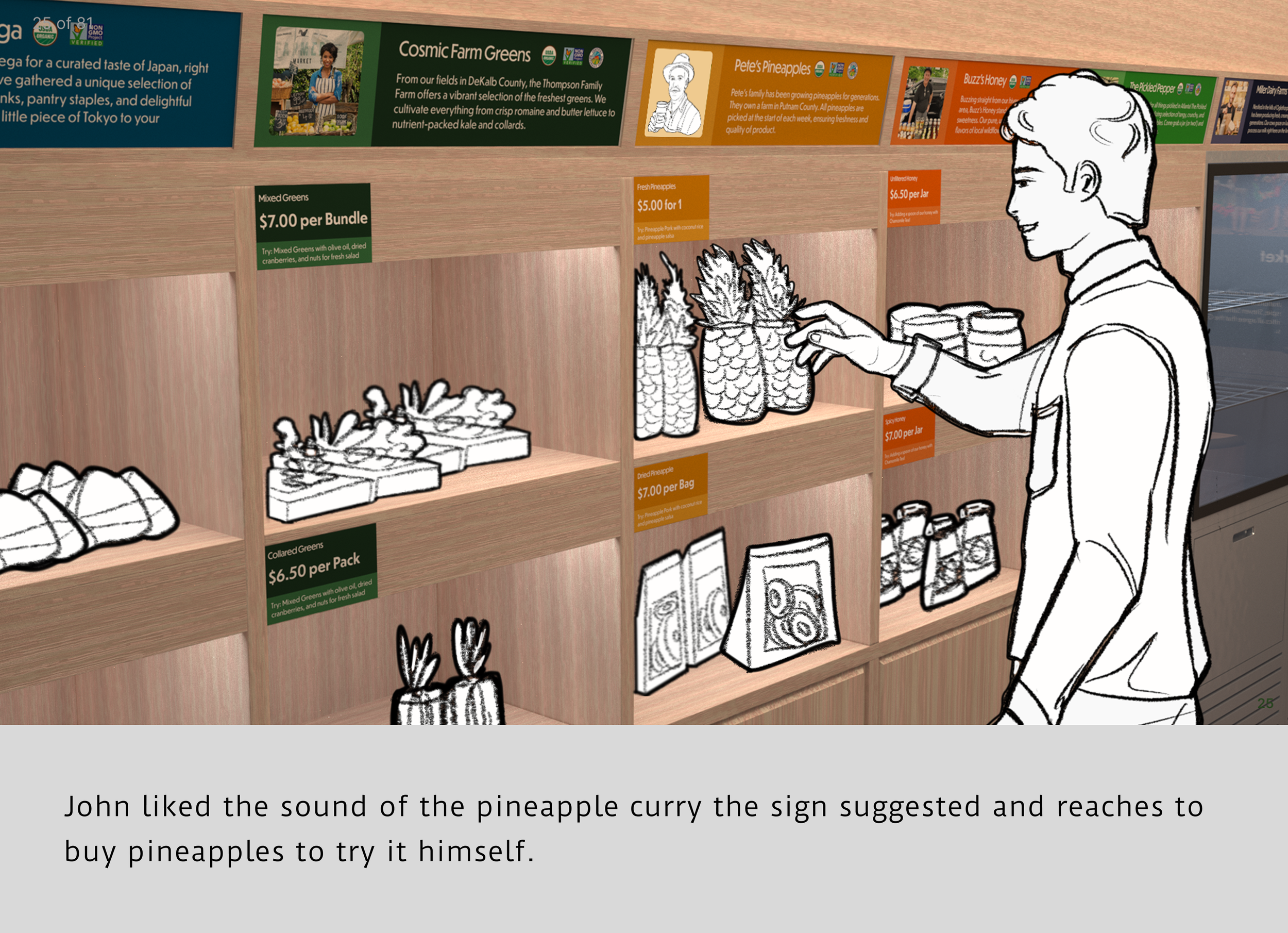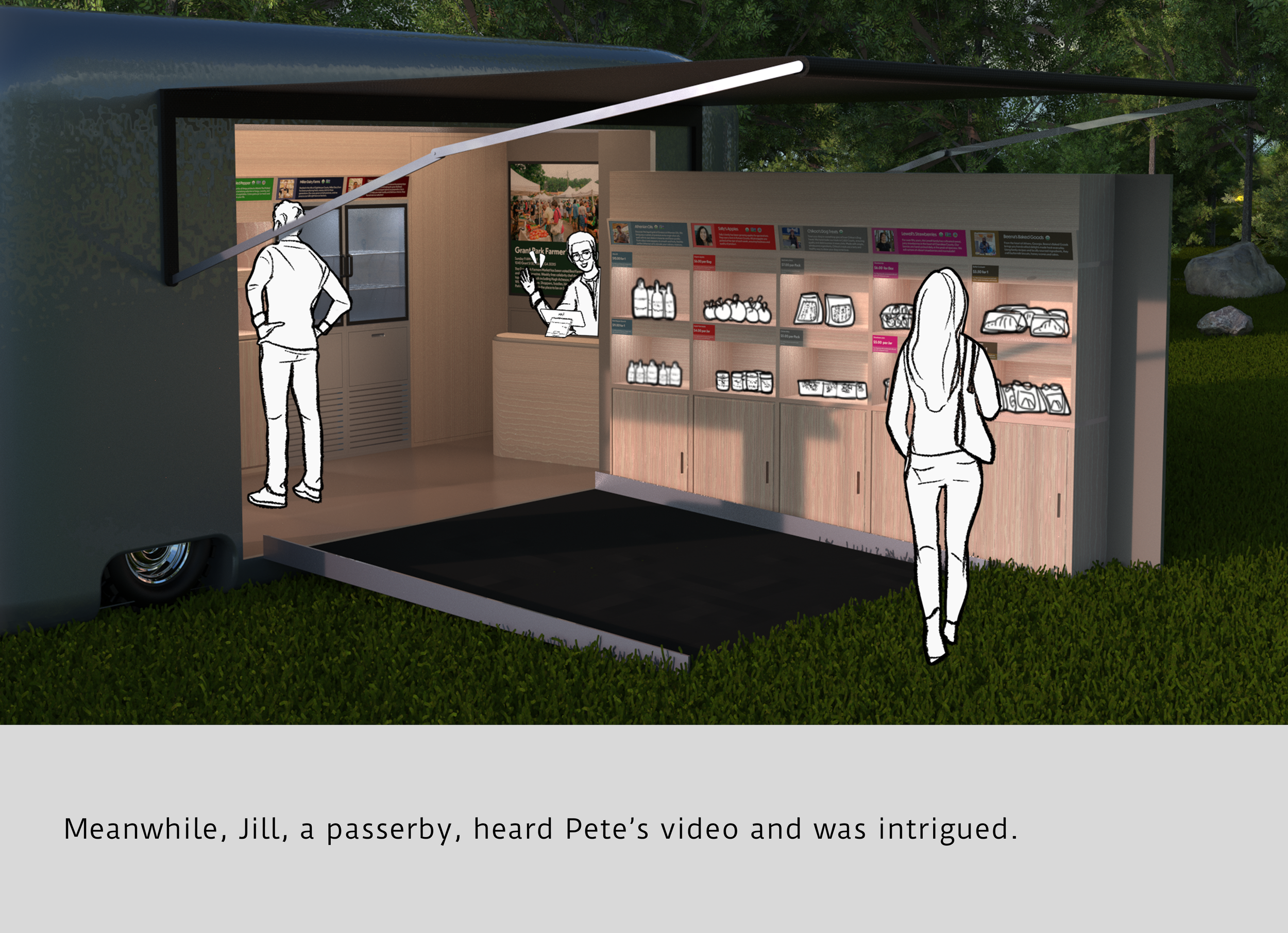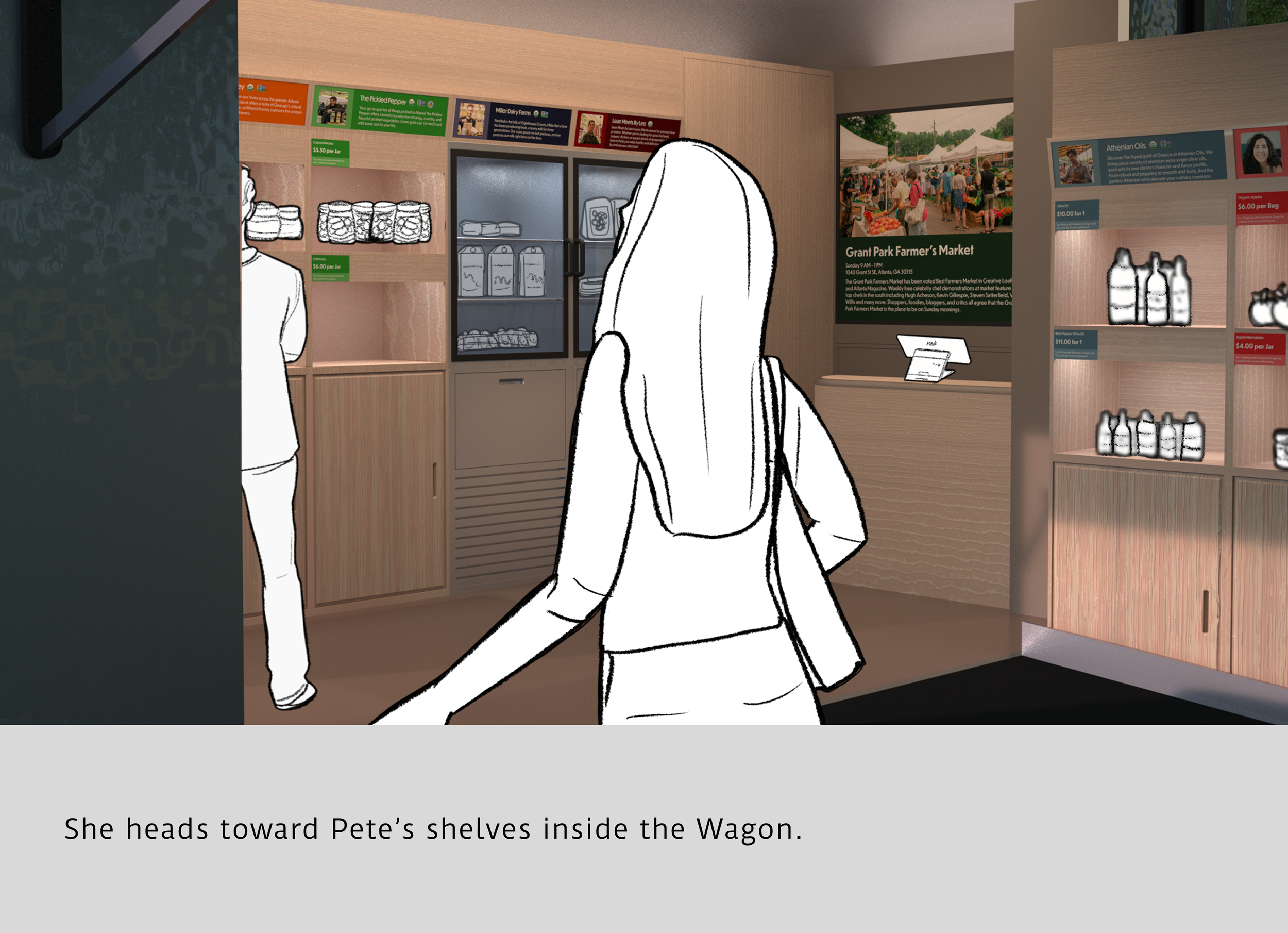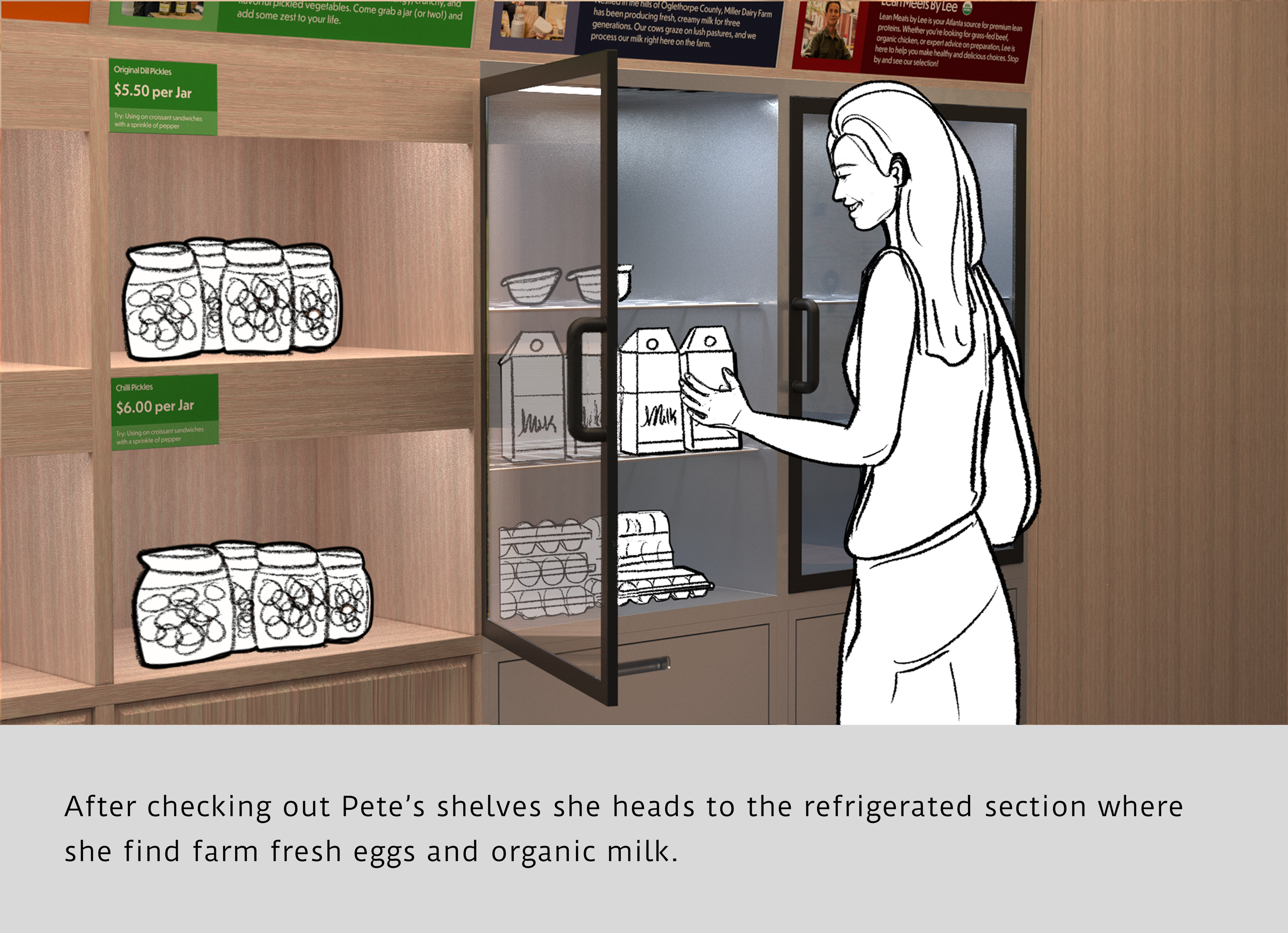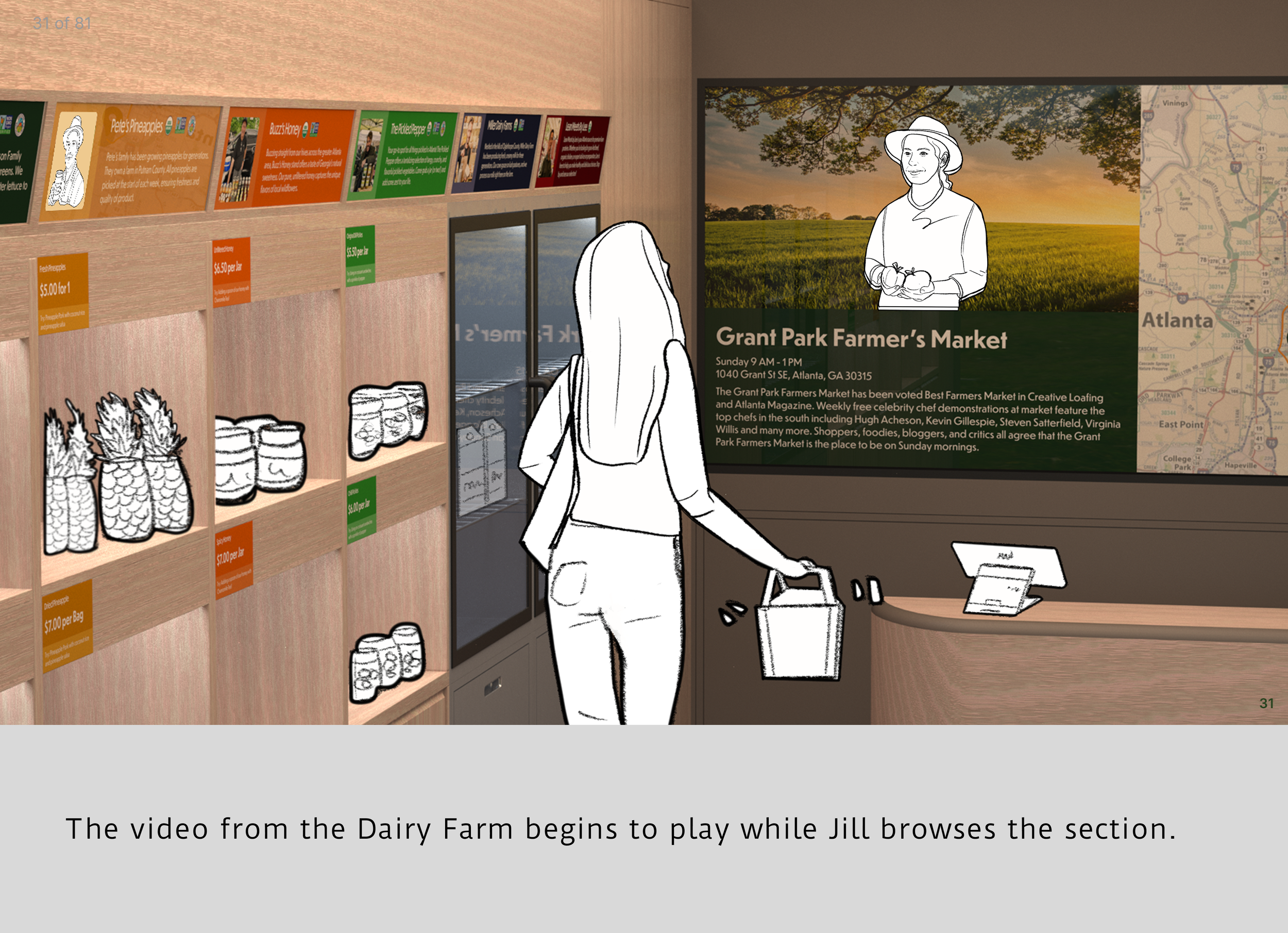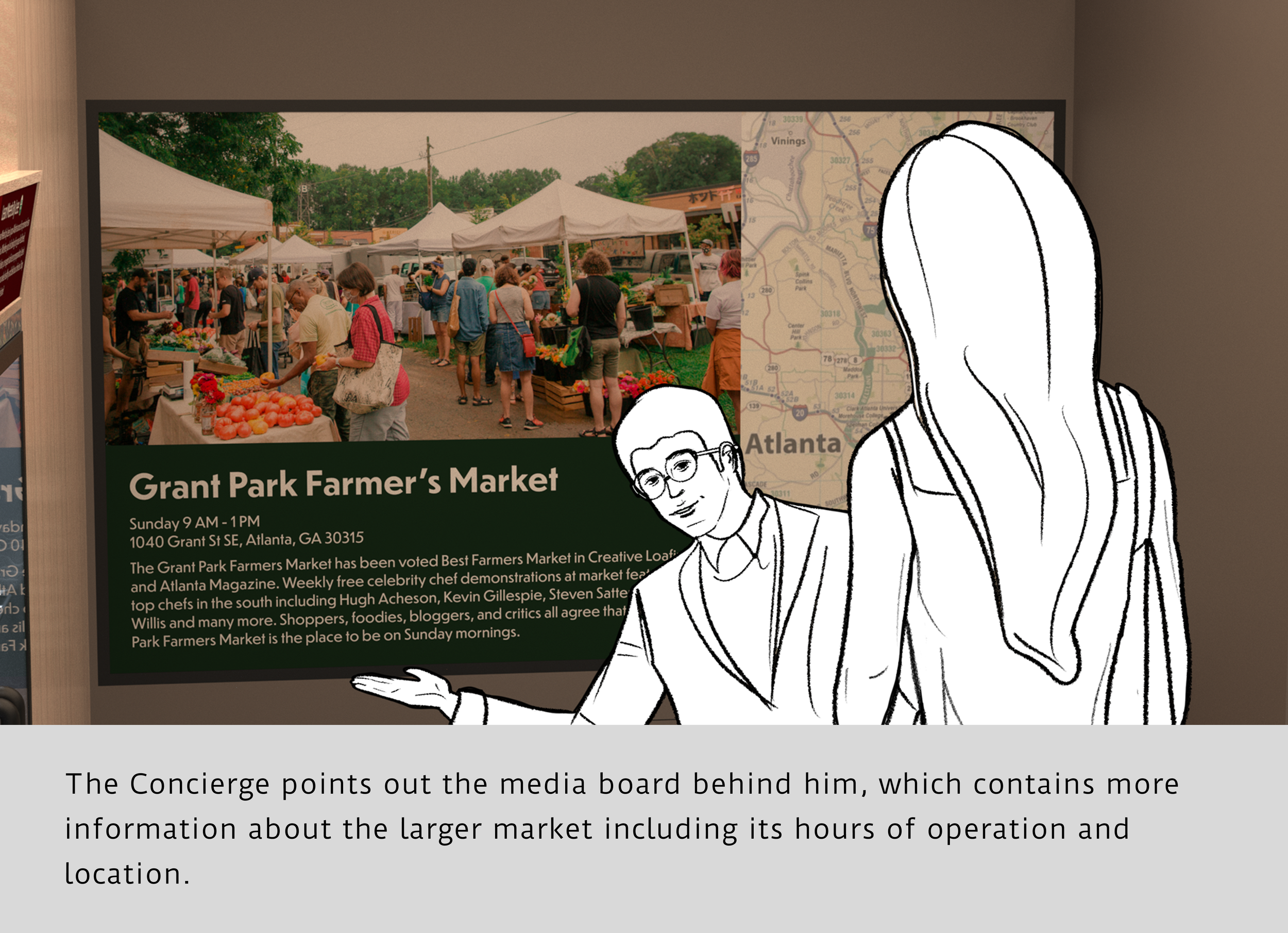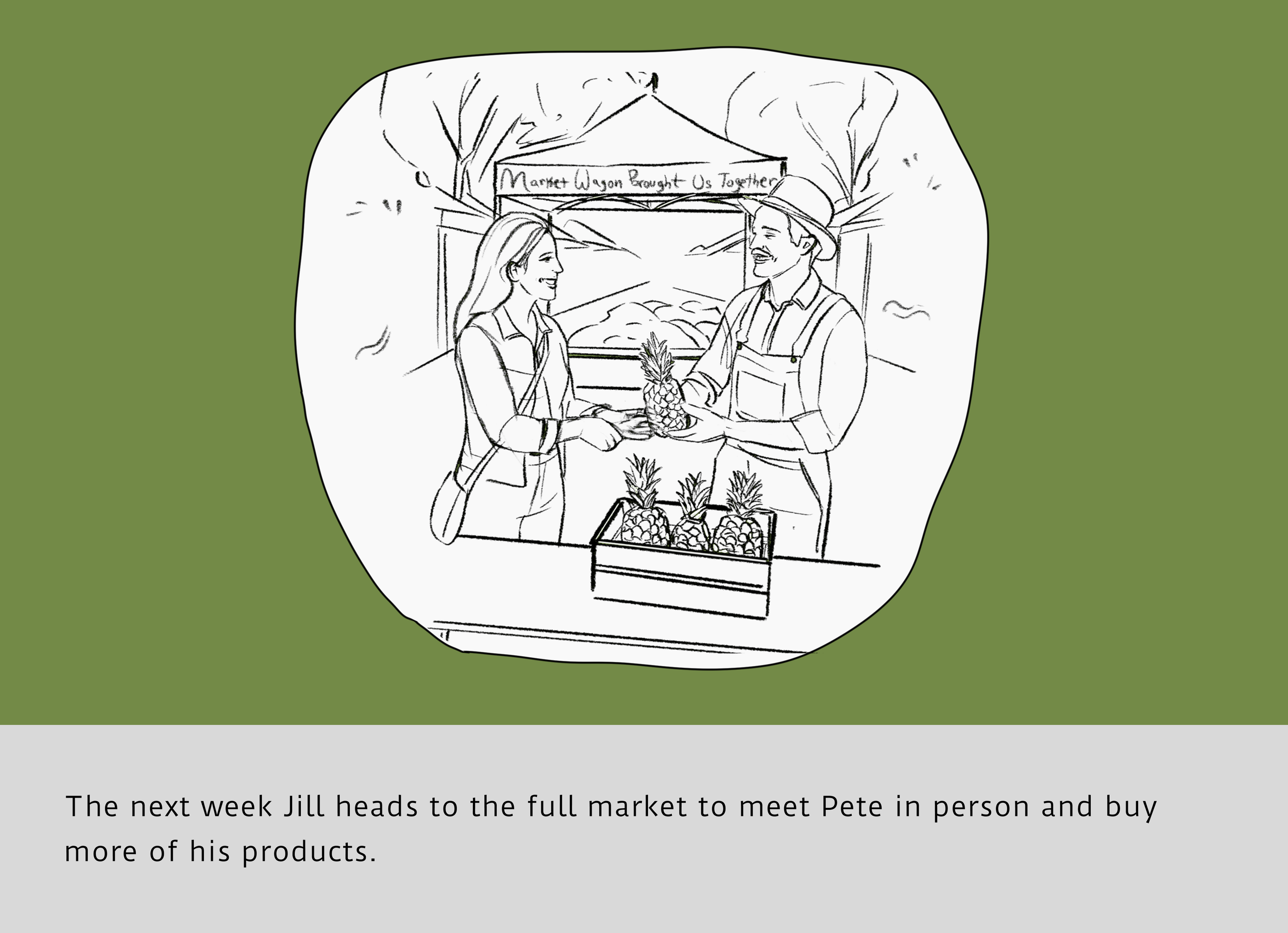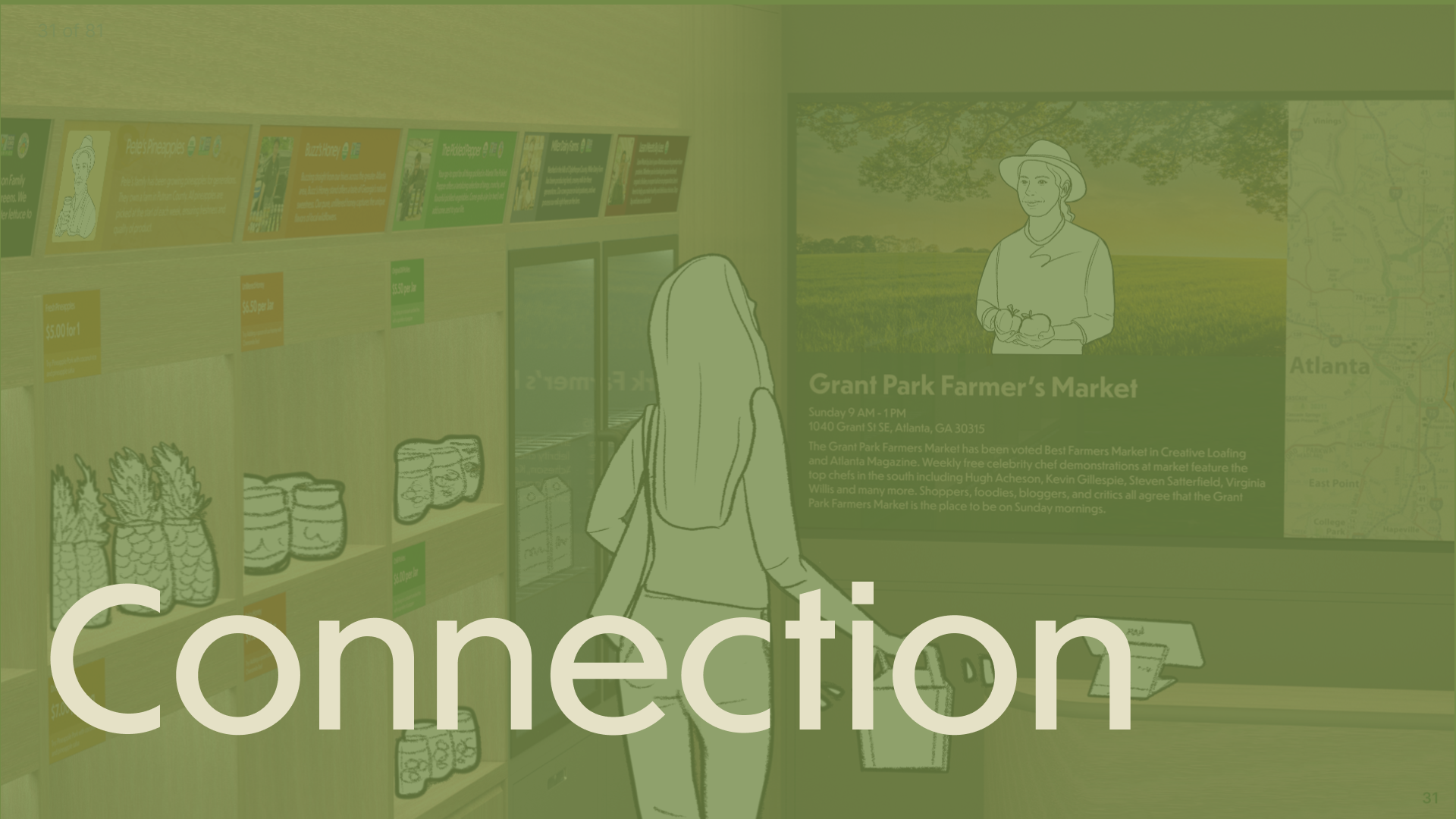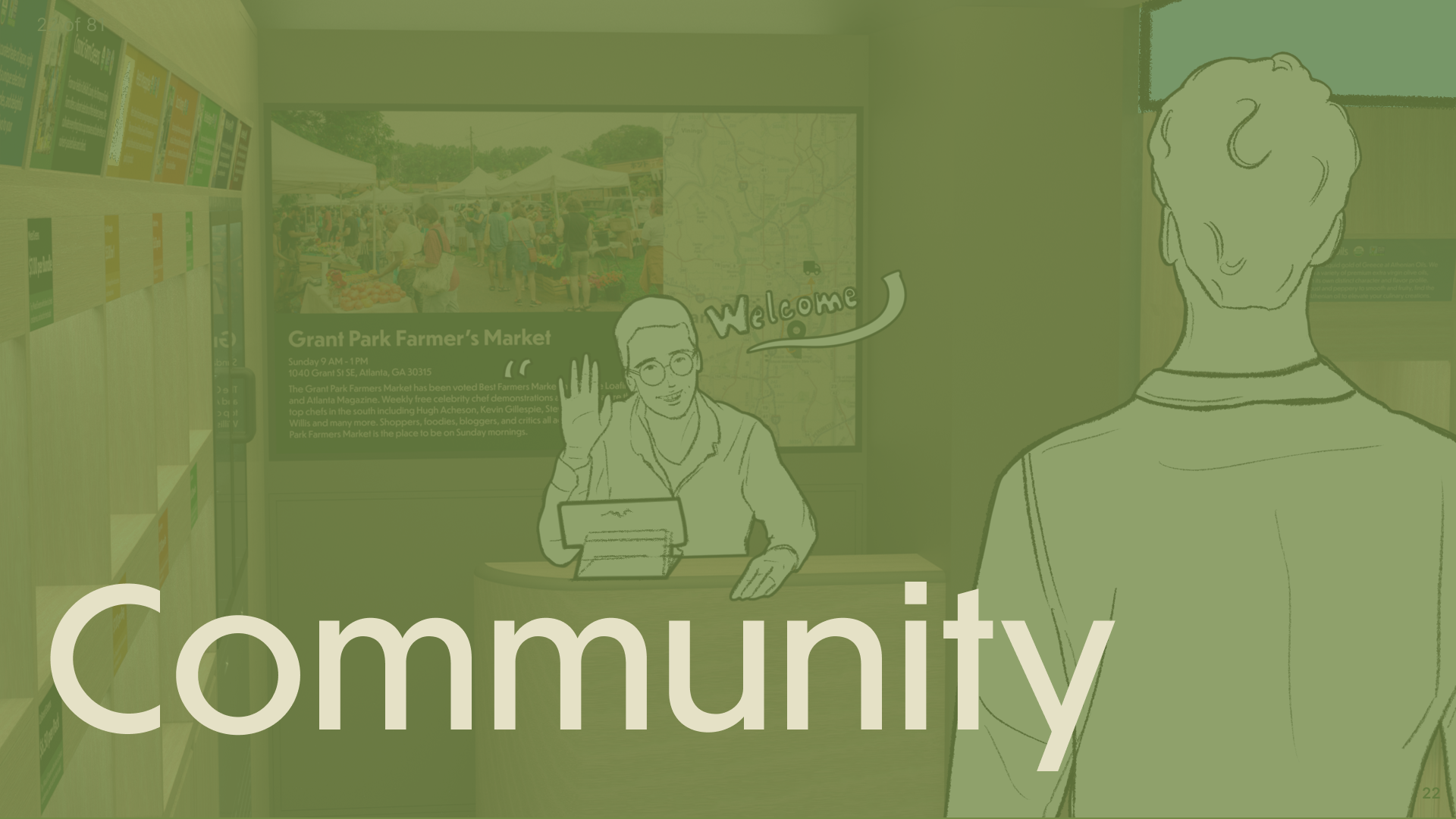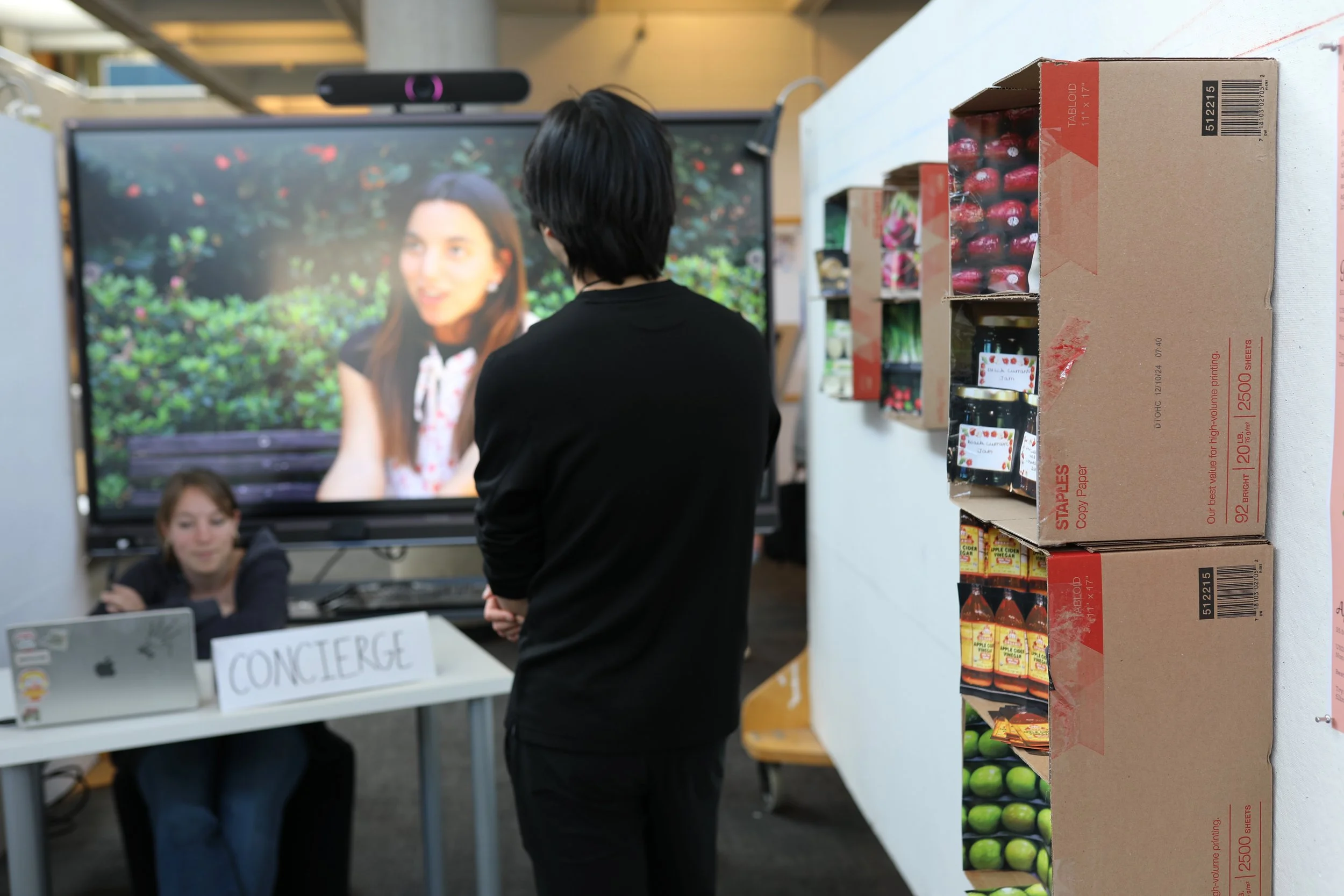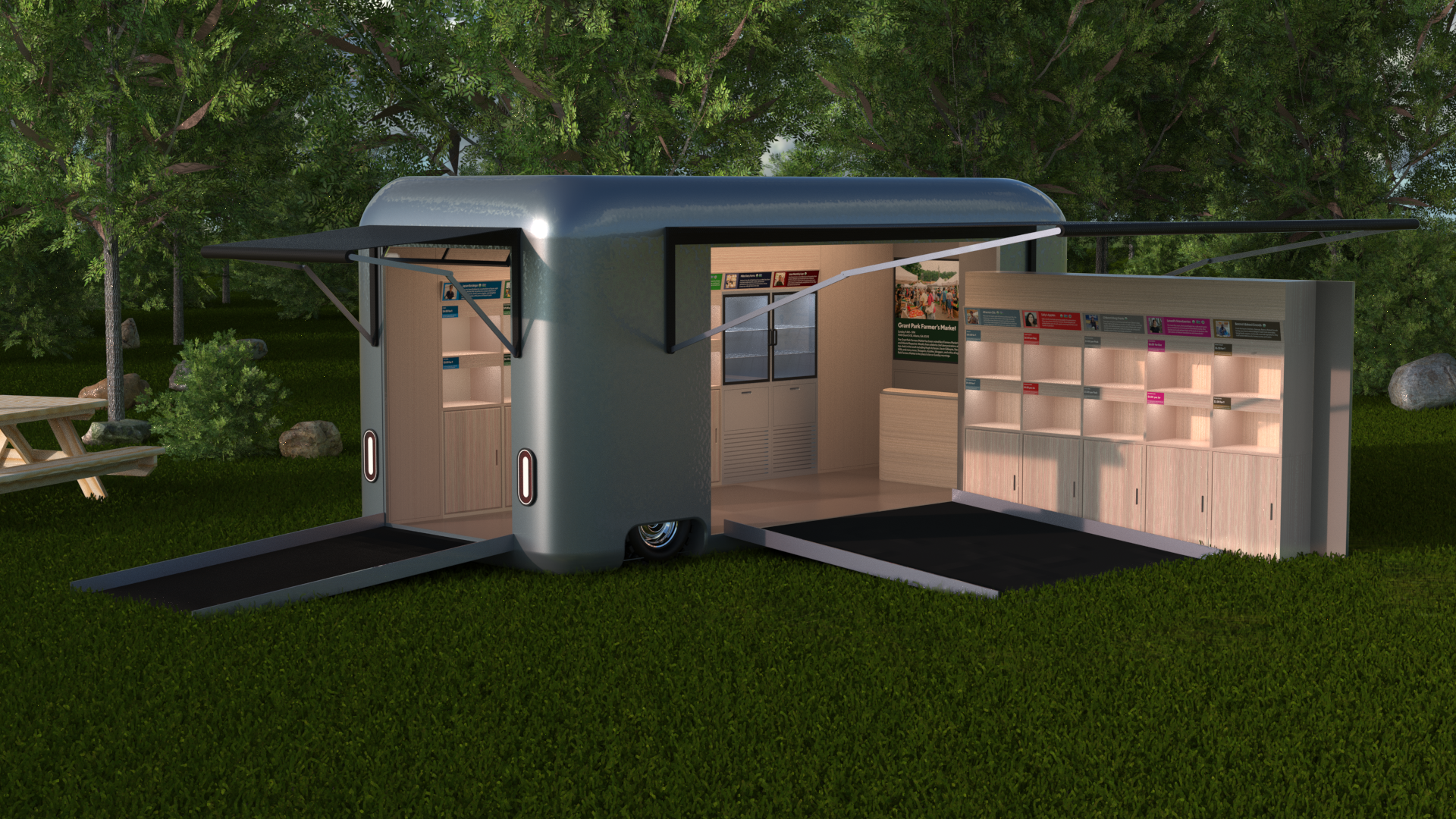
The Market Wagon:
Making the Farm Feel Closer than Ever
Meet the team
Audrey Brienza (that’s me!)
Testing Design, 3D Modeling, Rendering, Video Editing
Jenny Gao
Prototype Construction, Sketching, 2D Animation
Divya Sharma
Presentation Preparation, Signage Design
Victoria Avila
Presentation Preparation, Presentation Design
Why do buyers value Farmer’s Markets?
Farmer’s markets goods can be pricy but buyers return to these markets time and time again.
Sellers take pride in providing their communities “good”, organic, and ethically sourced products.
Buyers in turn value the unique, local, and organic nature of the products they buy at these markets.
“The definition of food is something that gives nutrients for growth” – Frequent Shopper at Grant Park Farmers Market
Buyers and sellers connect on a personal level, bond over common values, and forge lasting relationships as buyers become regular customers.
It’s essential to these businesses to make connections to secure frequent buyers and convert these sales into their websites, store fronts, or other sales avenues.
“People are the natural wonders of the world”
– Patchwork Farmers Seller
Sellers and buyers belong to the same community.
They bond over common values and conversation to make a diverse community that bonds over the shared love of quality food and supporting small businesses.
“They are all trying to survive and I want to support what they are doing” – Grant Park Customer
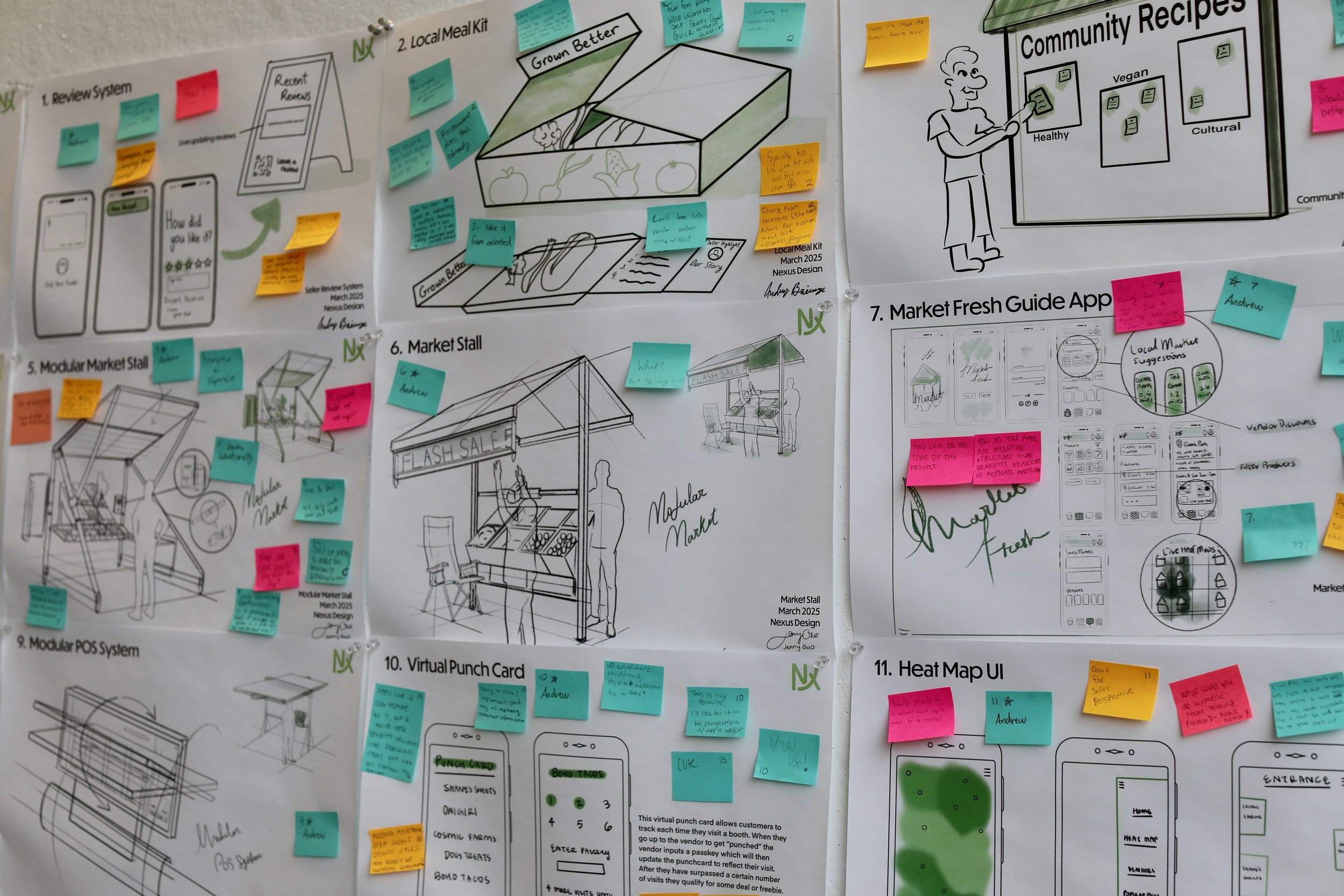
The Design Opportunity
How might we extend the influence of farmer’s markets into more communities?
How might we communicate the personality and value of local businesses without the sellers presence?
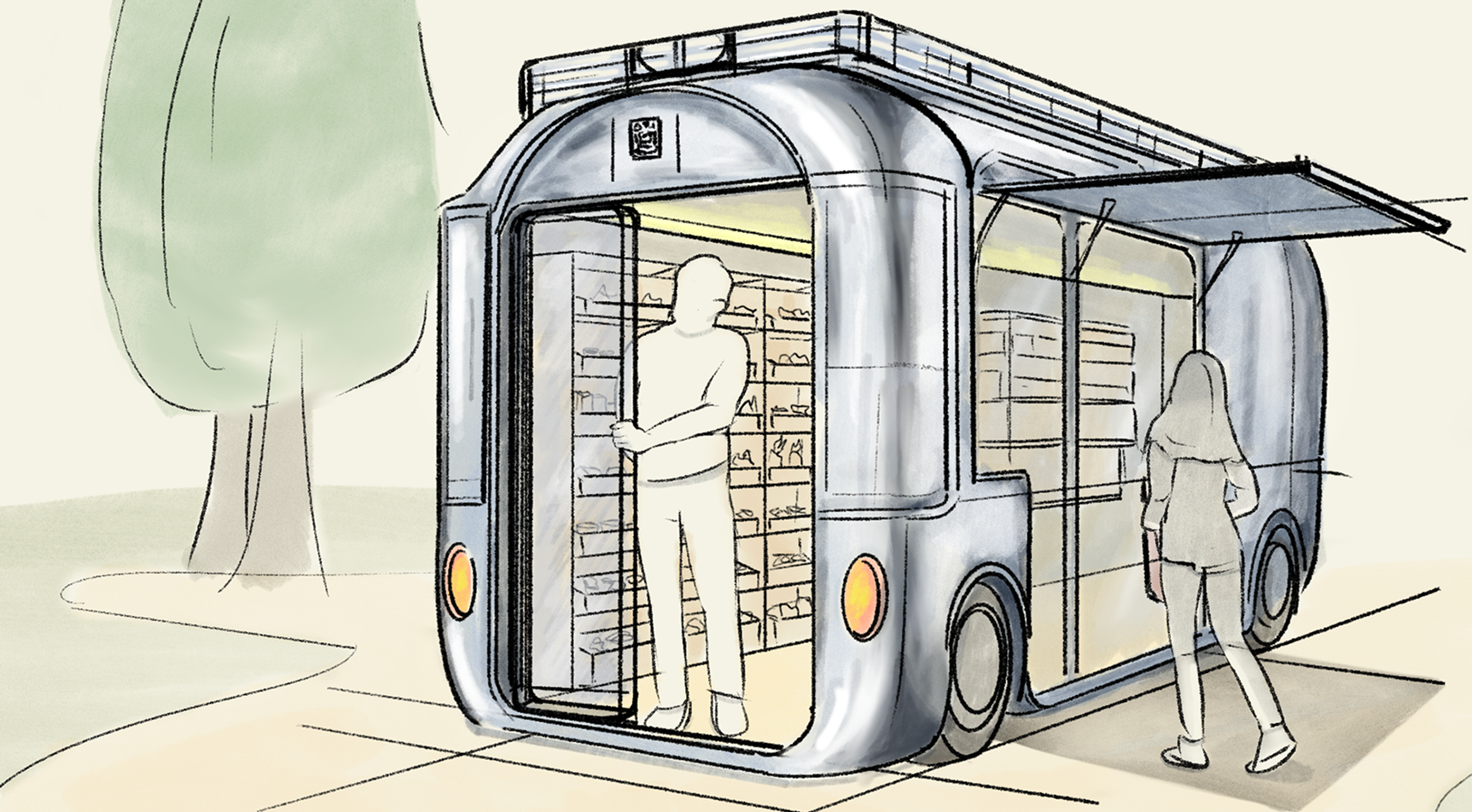
The Market Wagon:
A Mobile Farmer’s Market Concept
Concept sketch by Jenny Gao
Signage Development
When the seller can’t be present it’s more important than ever to develop systems to communicate the ethos of the sellers to the buyers.
Signage Content
We conducted 2 sets of A/B tests to compare four signage layouts with different information density. After we conducted interviews to assess what participants read and remembered. We also observed their behavior, noting which artifacts they interacted with and for how long.
Testing participants were discouraged by overly long blocks of text.
We found we needed to prioritize the information most relevant to closing sales: price, product sourcing information, and recipes or other use suggestions for the products.
Content Layouts
We found the most successful signage was placed directly next to each product on the upper left corner of the product shelf.
This signage had the highest rates of participants reading and remembering the information, as well as the information influencing the sale.
Video Used in Testing
Testing Results
Dynamic Content
After testing different static sign layouts we ran a series of tests where we played a fake video from one of the sellers in the test. In this video they talked about their business and suggested a recipe made with their products. These tests saw higher overall rates of attention regardless of how much the participants engaged with the signage.
This demonstrates that video content can effectively convey information without requiring the participants to do as much work reading signs.
Participants also shared that the video made them feel more connected to the seller, as if they had met her before.
Layout and Sizing Tests
The trailer size is limited by government regulations. We tested the shelf and floor plan height to determine the optimum layout of the interior.
We also found that products placed too low or high were overlooked by participants in the small space. This is why we chose to set all shelf heights between 3.5 and 5 feet off the ground.
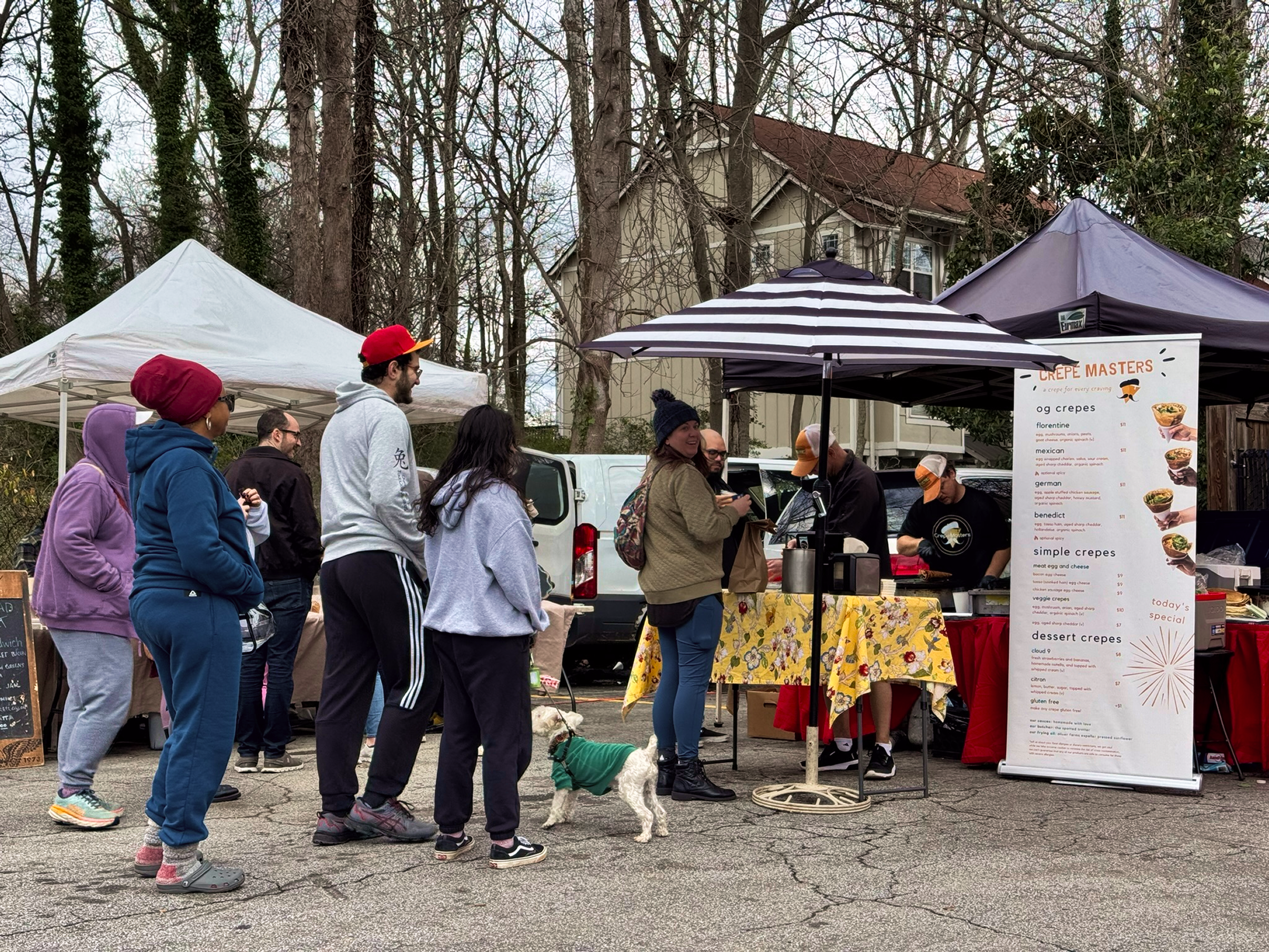
Who does this mobile market support?
